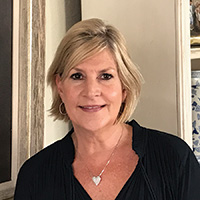Florida is known for its orange groves, but there’s so much more growing throughout the state, and even in hotel backyards.
The Sunshine State’s long agricultural history dates to the 1500s, when the Spanish settled in St. Augustine. They planted wheat and cereal grains, along with fruit trees and vegetables.
The Seminoles also contributed to the area’s rich agricultural history by growing sugarcane, vegetables and citrus, and they remain among the largest cattle producers today.
Currently, several cities in Florida are known for their huge harvests, including corn in Zellwood and strawberries specific to Plant City (there’s even a festival every March honoring the berry).
Making the most of the rich soil and sophisticated hydroponic technology, chefs are now growing their own fruits, vegetables and herbs—indoors and out.
Homegrown Flavors
At The Ritz-Carlton Orlando, Grande Lakes and JW Marriott Orlando, Grande Lakes, restaurant dishes are prepared and seasoned with homegrown ingredients gathered from their 7,000-square-foot Whisper Creek Farm, as well as other farms in the area. Both hotels share the farm, which can accommodate 500 people in rounds of 10 or 800 people for a reception.
Taking advantage of Florida’s four growing seasons, fruits and vegetables are readily available for use in all properties’ restaurants year-round. Guests are encouraged to browse the gardens and sample the farm-fresh produce featured throughout the properties in restaurant items, beverages and even spa treatments at the award-winning Ritz-Carlton Spa Orlando, Grande Lakes.
“Working with our gardeners who plant six months out is a great way to collaborate with the kitchen,” said JW Marriott Orlando Executive Chef John Janucik. “We talk about what grows well in the Florida heat so we can stay ahead of the curve. We also have a chicken coop with chickens, ducks and quails that we raise for eggs. With those, we prepare lobster with deviled duck eggs and more while our garden-fresh hops are used in our nano-brewery. “
The farm also produces honey, which is used in cocktails, such as The Beekeeper made with Palm Ridge small-batch Florida whiskey, fresh lemon juice, Whisper Creek Farm honey and orange ginger bitters.
On the herb wall there’s lemon and Thai basil and peppermint for cocktails.
“Our mixologist creates custom cocktails with his house-made bitters, and these garden-fresh herbs are blended right into the drinks,” Janucik said.
Because the farm can’t supply all the food needed for a banquet, it has 30 to 40 local farms it works with, as well.
“We get our beef and eggs from Lake Meadow farm where they set up a farmers market for chefs,” Janucik said.
For after-dinner gifts, guests receive jars of Whisper Creek Farm honey or jam, or homemade bottled hot sauce. According to Janucik, the farm engages directly with his culinary team.
“When we’re in banquet mode for three months straight, it’s important to break things up,” Janucik said. “In between lunch and dinner, I’ll bring in something from the farm and have the staff taste it. That gets their creativity flowing and inspires them to think outside the box.”
Chef de Cuisine Gordon Maybury, at Turnberry Isle Miami, Autograph Collection in Aventura, has a botanical wonderland filled with a collection of herbs: basil, mint, sage and rosemary. With fresh fruits such as lime and oranges at his disposal for use in his signature recipes, he also believes having this bounty helps stir up the kitchen’s creativity.
“It’s just amazing to have a garden here where we can grow what we want and watch as it comes into bloom,” Maybury said. “As it comes to life, so does our creativity and imagination. We incorporate these garden-fresh ingredients into our weekly ever-changing brunch menu and handcrafted cocktails served at our Bourbon Steak restaurant, Corsair Kitchen & Bar, and our Lobby lounge. We use key limes for a ceviche, grilled mango for a salad and lemongrass for a fresh new dressing. It’s so simple; it’s how cooking and life should be.”
Chef-led garden tours are also available to see all the produce the garden has to offer.
At Mission Inn Resort & Club in Howey-In-The-Hills, director of food and beverage David Trotter also has a lot at his disposal.
“With regards to the resort’s garden, we grow 60 to 75 percent of the vegetables we serve in our fine dining room, El Conquistador,” he said. “We grow sweet and red basil, thyme, peppers, lavender, dill—you name it. Our superintendent of the garden plants cherry tomatoes, peppers, multicolored beets, and gold and purple cauliflower.”
If there’s a really big harvest, produce will go to their other restaurants—Nickers’, La Hacienda and La Margarita—for banquet food, according to Trotter. For additional food, the hotel tries to source locally as much as possible.
“We have local growers so we make regular trips to the Tampa Wholesale Produce Co-op Market to purchase the freshest possible produce, direct from the growers,” Trotter said. “The hotel bar’s Moscow mule uses mint from the garden, and in the winter we have green onions, kale, broccoli, tomatoes, carrots and three different cauliflowers. We are getting ready to plant spinach next.”
At Opal Sands Resort on Clearwater Beach’s main restaurant, Sea-Guini, a vertical garden is featured on the back wall, which is about five feet high by three feet wide. The vertical garden’s produce rotates seasonally and currently includes greens like Swiss chard, different types of basil, cilantro, oregano and various micro greens.
Once ready for picking, the produce is incorporated into items like salads, cocktails and entree garnishes, and more specifically, the basil is used in the Tuscan and Margherita pizzas, and a spicy mix of micro greens is used in the tuna tartare.
The Hilton Marco Island Beach Resort and Spa just planted its first garden with space commandeered from where the resort’s beach cart was parked, said Cody Wiggen, executive sous chef for the property.
“We are right on the Gulf, so we planted a lot of fruit trees like key lime and tangerine, which tolerate the salt and herbs, flowers, peppers and eggplant,” Wiggen said.
Wiggen has also found some interesting fruit to plant so “guests will have something more interesting than melon on their fruit plates,” including black sapote, which tastes like chocolate pudding in the middle; the canistel, indigenous to Central America and Mexico and similar to mango; and sapodilla, with its light orange color and creamy texture, which tastes like sweet potato.
“We want to give our guests something to talk about,” Wiggen said.
Click here to view more of the 2018 Meetings Today Florida supplement.







